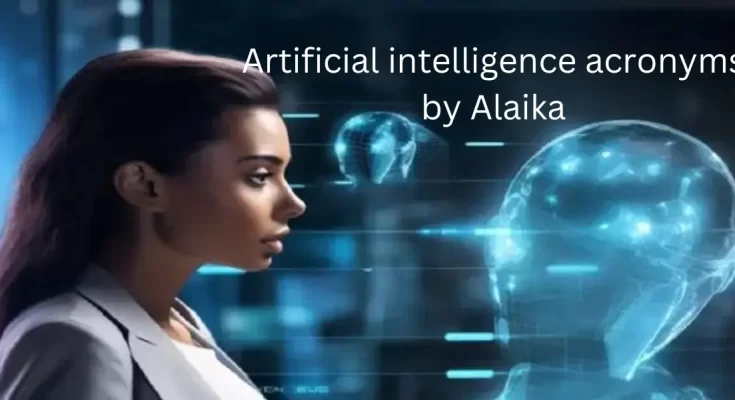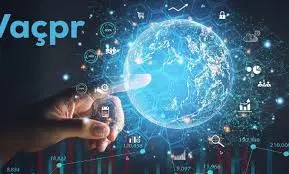Artificial intelligence (AI) is constantly evolving, with new acronyms developing in the field. Understanding these terminologies is critical for anyone working with artificial intelligence. This blog, “Understanding Artificial Intelligence Acronyms by Alaikas,” seeks to clarify and explain fundamental AI and concepts.
What are AI acronyms?
Understanding Artificial Intelligence Acronyms by begins with understanding what acronyms in AI imply. Acronyms are abbreviations made from the first letters of words. These acronyms are frequently used in artificial intelligence.
The Most Common Artificial Intelligence Acronyms by Alaikas
AI: Artificial Intelligence
Understanding Artificial Intelligence by Alaikas starts with AI. AI stands for artificial intellect, a large branch of technology aimed at creating machines with human-like intellect. This encompasses learning, reasoning, problem solving, and other skills.
ML (machine learning)
Understanding Artificial Acronyms by Alaikas includes ML, which stands for machine learning. Machine learning is a subset of AI that focuses on developing algorithms and statistical models that enable computers to learn from and make predictions or decisions based on data.
DL: Deep Learning
Understanding Intelligence Acronyms by Alaikas includes DL. Deep learning is a kind of machine learning that uses neural networks with several layers to evaluate complicated patterns in massive datasets. It is very effective for picture and speech recognition.
NLP (Natural Language Processing)
Understanding Artificial Intelligence Acronyms by Alaikas entails Natural Language Processing (NLP). NLP is a subfield of AI that studies the interface between computers and human languages. It encompasses activities like text analysis, translation, and detection of speech.
CNN (Convolutional Neural Network)
Alaikas’ Understanding Artificial Intelligence contains CNN (Convolutional Neural Network). CNNs are a type of deep neural network that is widely used to process and analyze visual data, such as photos and videos.
RNN (Recurrent Neural Network)
Understanding Artificial Intelligence by Alaikas also includes RNN, which stands for Recurrent Neural Network. RNNs are designed to process sequential data and are especially useful for jobs involving time series or natural language.
AGI (Artificial General Intelligence)
Understanding Artificial Intelligence Acronyms by Alaikas involves AGI, or Artificial General Intelligence. AGI is a theorized form of AI that has the ability to understand, learn, and apply intelligence across a wide range of tasks on a par with human intellect.
SVM (Support Vector Machine)
Alaikas’ Understanding of Artificial Intelligence Acronyms feature the acronym SVM (Support Vector Machine). SVM is a supervised learning model used for classification and regression. It operates by determining which hyperplane best separates distinct classes from the data.
GAN (Generative Adversarial Network)
Understanding Artificial Intelligence Acronyms by Alaikas also discusses GAN, which stands for Generative Adversarial Network. GANs are made up of two neural networks, a generator and a discriminator, that compete against one another to generate realistic synthetic data.
API (application programming interface)
Understanding artificial intelligence Alaikas’ include API (Application Programming Interface). In the context of AI, APIs enable various software systems to interface with AI models and services, facilitating integration and functioning. For example, “AI” stands for artificial intelligence. Aside from that, numerous acronyms refer to specific aspects of artificial intelligence, such as machine learning (ML) and deep learning. Understanding these terms is critical for comprehending the greater spectrum of AI technologies..
Benefits of Artificial Intelligence Acronyms by Alaikas
Streamlined Communication
Understanding artificial intelligence Acronyms by Alaikas facilitate communication in the technology field. Acronyms are a simple way to reference complicated subjects, helping professionals communicate more effectively. This efficiency is critical in fast-paced workplaces where clear and timely communication is required.
Enhanced learning and education
Understanding Artificial Intelligence Acronyms by Alaikas encourages improved collaboration among teams working on AI projects. When team members have a common knowledge of acronyms, they eliminate confusion and improve collaboration. Clear communication regarding technology and techniques promotes successful teamwork and project success.
Efficient knowledge transfer
Understanding artificial intelligence Acronyms by Alaikas promote efficient knowledge sharing between individuals and companies. Acronyms reduce complicated information to shorthand, making it easier to exchange knowledge and insights across settings. This efficiency is useful for training new personnel or incorporating new technologies into current systems.
Informed Decision-Making
Knowing Artificial Intelligence Acronyms by Alaikas enables informed decision-making in AI-related sectors. Understanding the acronyms associated with various technologies allows professionals to better evaluate possibilities, make strategic decisions, and deploy solutions that meet their objectives. This knowledge assists in picking the appropriate tools and procedures for certain applications.
Competitive Advantage
Understanding Artificial Intelligence Acronyms by Alaikas can provide a competitive advantage in the technology business. Professionals and companies that understand these acronyms and the concepts they represent are better positioned to effectively use AI technologies. This knowledge can result in more inventive ideas, better performance, and a stronger market position.
Advanced AI Acronyms by Alaikas
BERT: Bidirectional Encoder Representations from Transformers
Alaikas’ Understanding Artificial Intelligence Acronyms contains BERT (Bidirectional Encoder Representations from Transformers). Google developed BERT, a deep learning model for natural language processing. It improves.
GPT: Generative Pre-trained Transformer
Understanding Artificial Intelligence Acronyms by Alaikas discusses GPT, which stands for Generative Pre-trained Transformers. OpenAI developed GPT, a sophisticated model for creating human-like text. It is pre-trained on enormous volumes of data and fine-tuned for certain tasks, such as text production and completion.
RL: Reinforcement Learning
Alaikas’ explanation of artificial intelligence acronyms includes the term RL, which stands for reinforcement learning. Reinforcement learning is a sophisticated AI technique in which an agent learns to make decisions by getting rewards or punishments for its behavior. This method is employed in a variety of applications, including gaming and robotics.
TTS (text-to-speech)
Alaikas’ Understanding of Artificial Intelligence Acronyms feature the acronym TTS (text-to-speech). TTS technology translates written text into spoken words. It is frequently used in applications such as virtual assistants and accessibility tools for those with visual impairments.
Conclusion
Alaikas’ Understanding Artificial Intelligence Acronyms is a helpful resource for learning about the key AI acronyms and technology. From fundamental definitions to practical applications and future developments, understanding these topics is critical for anyone interested in AI. By becoming acquainted with these acronyms and their meanings, you will gain a better understanding of the AI environment and its possibilities.
FAQs
AI (artificial intelligence) refers to technology meant to accomplish tasks that often require human intelligence, such as learning, reasoning, and problem-solving.
AI (artificial intelligence) refers to technology meant to accomplish tasks that often require human intelligence, such as learning, reasoning, and problem-solving.
DL stands for deep learning, a subset of machine learning that uses multi-layered neural networks to evaluate complex data patterns such as images and speech.
NLP stands for Natural Language Processing, which involves the interaction between computers and human languages, enabling machines to understand and generate text or speech.
CNN stands for Convolutional Neural Network, a type of neural network particularly effective for image and visual data.



